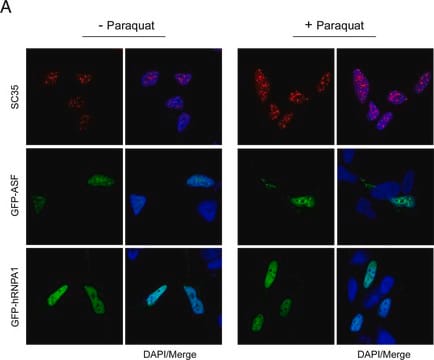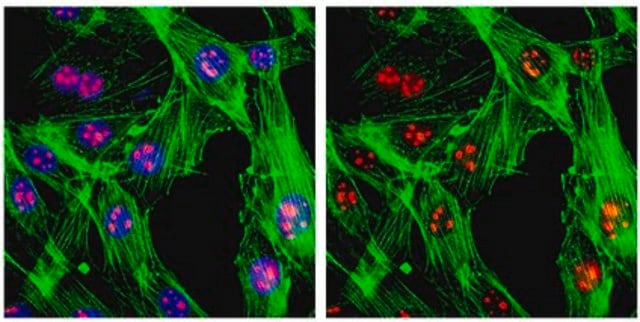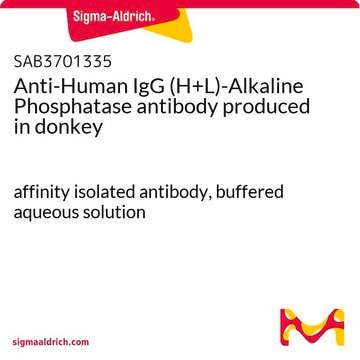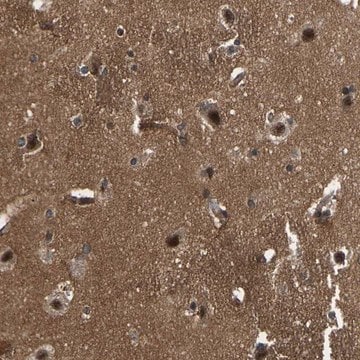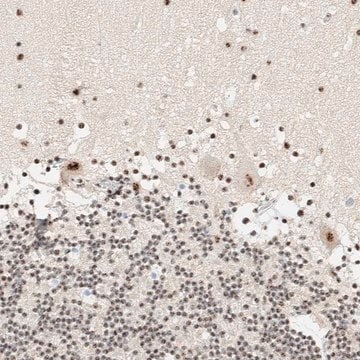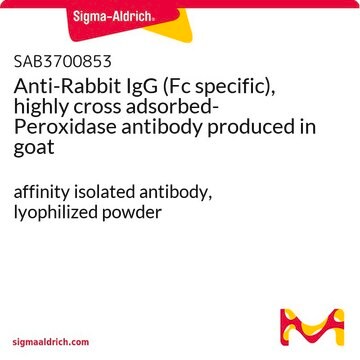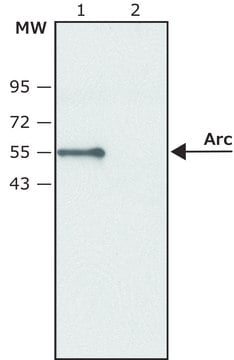SAB4200725
Anti-Splicing Factor SC-35 antibody, Mouse monoclonal
clone SC-35, purified from hybridoma cell culture
동의어(들):
Anti-PR264, Anti-SFRS2, Anti-SFRS2A, Anti-SRp30b, Anti-Splicing component 35 kDa (SC35), Anti-serine/arginine-rich splicing factor 2 (SRSF2)
About This Item
추천 제품
생물학적 소스
mouse
항체 형태
purified from hybridoma cell culture
항체 생산 유형
primary antibodies
클론
SC-35, monoclonal
형태
buffered aqueous solution
분자량
~35 kDa
종 반응성
human, mouse, quail, hamster, frog, porcine, rat
농도
~1.0 mg/mL
기술
ELISA: suitable
dot blot: suitable
immunoblotting: suitable
immunofluorescence: 0.125-0.25 μg/mL using HeLa cells
immunohistochemistry: suitable
immunoprecipitation (IP): suitable
UniProt 수납 번호
배송 상태
dry ice
저장 온도
−20°C
타겟 번역 후 변형
unmodified
유전자 정보
human ... SRSF2(6427)
일반 설명
면역원
애플리케이션
- dot blot
- enzyme linked immunosorbent assay (ELISA)
- immunofluorescence
- immunohistochemistry
- immunoblotting
- immunoprecipitation
생화학적/생리학적 작용
물리적 형태
면책조항
Not finding the right product?
Try our 제품 선택기 도구.
Storage Class Code
10 - Combustible liquids
WGK
WGK 1
Flash Point (°F)
Not applicable
Flash Point (°C)
Not applicable
시험 성적서(COA)
제품의 로트/배치 번호를 입력하여 시험 성적서(COA)을 검색하십시오. 로트 및 배치 번호는 제품 라벨에 있는 ‘로트’ 또는 ‘배치’라는 용어 뒤에서 찾을 수 있습니다.
자사의 과학자팀은 생명 과학, 재료 과학, 화학 합성, 크로마토그래피, 분석 및 기타 많은 영역을 포함한 모든 과학 분야에 경험이 있습니다..
고객지원팀으로 연락바랍니다.